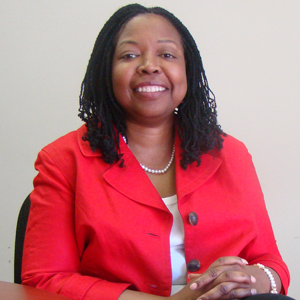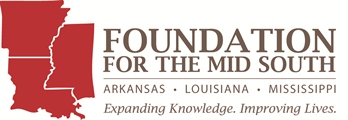Dream-maker: The Foundation for the Mid South helps see the possibilities, secure substantial funding
Lessons Learned
 Ivye Allen, President of the Foundation for the Mid South offered some advice on how to be better positioned to tap public and private funding to support local community efforts. Here are some of her takeaways:
Ivye Allen, President of the Foundation for the Mid South offered some advice on how to be better positioned to tap public and private funding to support local community efforts. Here are some of her takeaways:
Narrow your focus: With communities, schools or organizations facing a host of challenges, there’s often a tendency to try and tackle all the issues at once. To improve chances of securing grants of funding, focus on one or two in which you should be able to clearly achieve measurable results.
Listen up: When partnering with local communities, schools or organizations, Allen says it’s key for a community foundation is to provide guidance, expertise and encouragement, not to push a particular program or approach. “Listen to what they say and help them work toward their own solutions,” she says. “We don’t want to be running projects, we provide resources and connections and support to make things happen.”
Build on success: When an effort is successful, measure the results and then work to publicize and raise awareness about what was achieved. “If you can show that something works and you have success then it’s much easier to get funding and support with similar projects moving forward.”

“Dream big.”
That’s Ivye Allen’s philosophy when it comes to securing funding and support for local community efforts aimed at enhancing education, health care and other community needs. As President of the Foundation for the Mid South, Allen has employed that aspirational approach to help generate significant state and federal funding for a range of local programs and initiatives.
“A big part of what we try to promote is having the vision to see what might be possible,” says Allen, who has led the Foundation for the past eight years. “Sometimes we are working with these local towns and communities and the challenges are so daunting that they are overwhelmed. We try to help them focus on a few levers for change and then figure out ways to secure significant funding that will really make a lasting impact.”
The Foundation serves communities in three states – Arkansas, Louisiana and Mississippi – with the focus on enabling communities to develop solutions to better conditions and improve lives. Primary areas of concern are education, health and wellness, wealth building, and anti-poverty efforts.
The region is challenged by the fact that the Mid South is home to 30 percent of the nation’s poverty. Allen says that chronically strapped local budgets and the financial blow delivered by the Recession prompted the Foundation in recent years to step up efforts to solicit capital and support from both public and private sources that are outside the local communities the Foundation serves.
“It comes down to how do we leverage financing so we are not constantly doing pilot projects, but instead looking to fund multi-year efforts that can make a difference,” Allen says. “That mindset has helped me say to my staff, ‘It is not just about making grants, it is about thinking where your leverage is to take it to the next level.”
School District Sees Success
The Foundation has used the approach across its efforts to enhance education, health, and wealth building. A prime example occurred a few years back in the education space. The Leflore County School District in Mississippi received two consecutive years of “At risk of failing” rating and faced the possibility of a state takeover. With help and guidance from the Foundation, the district ultimately climbed two levels to the “Successful” rating within a span of three years.
The first step to getting the district heading in a positive direction, Allen says, was instilling her dream-big philosophy among school administrators. When they first met, Allen recalls that school officials were focused on securing funding for an after-school program. Allen said she probed further, pushing district officials to dig deeper into the roots of the challenges they were facing. “It was really about hearing them, but also trying to get them to think what would really move the school forward. An after-school program wasn’t going to cut it.”
‘Take a Chance’
Ultimately, they concluded that the fastest way to impact students was to improve teacher quality and resources. The Foundation helped the district craft a plan for teacher development and improvement program that ended up providing training and coaching to all of the district’s 225 teachers and administrators, focusing on their effectiveness in the classroom and office.
The district initially was able to get $1.2 million in state and federal funding to get the program started. At the Foundation’s urging, and bolstered by improving results, the district then teamed with a consulting firm to apply for and successfully receive a $5 million federal grant targeted for improving the struggling high school.
“I told them: Take a chance,” Allen says. “You may not get the grant, but write the application and go for it. For us at the Foundation it has become second nature to leverage opportunities such as that to try and secure enough funding and support to make a lasting impact.”
The Foundation duplicated the model at another neighboring school district and was able to help secure the funding and support that also led to significant improvements in teacher and student results.
Build on Your Reputation
Allen says a main focus of her efforts leading the Foundation has to instill dream big thinking among the staff members. They take a strategic approaching to identifying and addressing challenges in ways that provide better opportunities to tap funding and resources from outside the cash-strapped local communities.
The Foundation has bolstered its expertise of federal funding with some strategic hires. They also channel efforts into forging stronger relationships with state and federal officials and representatives, as well as consultants that are familiar with a range of public an private funding programs and sources.
The model has worked successfully in several instances beyond partnering with school districts. For instance, on the heels of the Recession, the Foundation worked with state agencies in Arkansas, Louisiana and Mississippi to secure nearly $4 million for a Nurse Family Partnership program aimed at helping young parents raise healthier children. The funding flowed through the Affordable Care Act Maternal, Infant and Early Childhood Visiting Program.
“After you start working with folks at the state and federal level you start to build a reputation that you are easy to work with,” Allen says. “They start to see you as great partners and that puts you in a better position to get support. It’s really about seeing public sector resources as a leverage point that can lead to an investment that is five-fold of what might have been possible just at the local level.”



